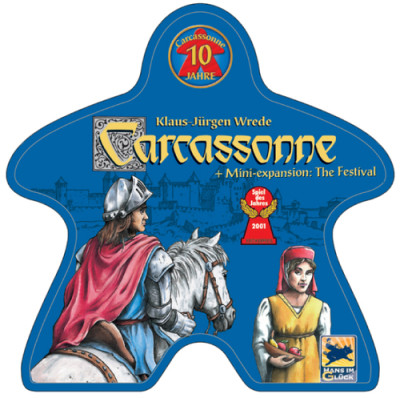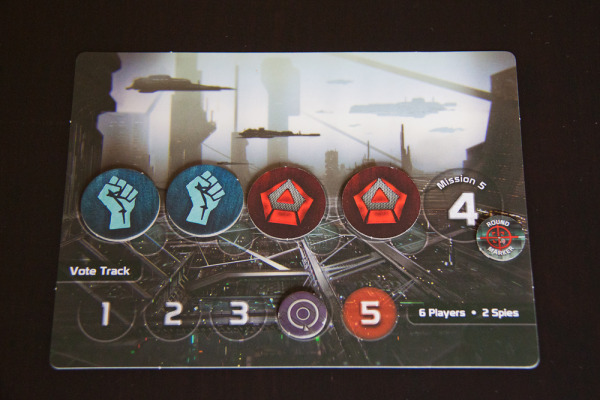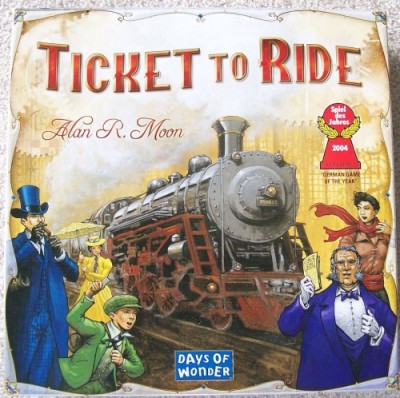

Five ways to get people to try games
I love my hobby for many reasons. The games are amazing and varied and contain all these shiny bits. They tell stories about 1930s investigators going insane and building of fantasy empires and making awesome sushi platters. There’s something in there for everyone — whether you want to solve a murder, play the terraforming mars expansion, or just stick to traditional Monopoly. They let you step away from the ever-present glare of a screen and unplug with a beverage of choice in hand. But most of all it is of course about people that you play with.
The interaction, the collaboration (or competition), the pure joy of engaging in a meaningful fun activity together is thrilling. It makes me feel closer to people and it makes me feel like we’re sharing an experience – something that might create an inside joke in the future or create a joking grudge to be invoked at a later date. I love playing games with people. So I always look for more ways to make people I know into people I play games with.
I have given a fair bit of thought to what makes people want or not want to try games and wanted to share these. While I think it’s important to show specific examples of games to illustrate my points – I’ll focus on general principles that I think will make your conversion efforts effective and fun. So without further ado – here are my Five Ways to Get People to Play Games.
1. Keep it simple.
I view rules like an obstacle course. Running it will get you to where you want to go – having fun with the game, but getting there can be a struggle. Sometimes so much that even as someone is describing the course to you – you have already quit. So keep in mind that people you are introducing the game to may not have the endurance or experience to take in a lengthy and complex ruleset. Pick games that you can explain extremely quickly and can start playing right away, such as a simple yet enjoyable game of cornhole that you can start playing once you’ve checked out these reviews from somewhere like gamequarium.com to get your hands on the best set for your needs. Your main goal is to get from “game starts” to “you are enjoying yourself” in as little time as possible. If a game takes 10-15 minutes to describe – you are risking losing your audience before the gameplay even begins.
Example: Carcassonne.
I got my intro explanation of farmer-less Carcassonne down to 2 minutes. There are literally only two rules in that game – match the squares and only have one meeple on an element. Got that? Good, let’s go! The idea is to make someone start enjoying themselves before they can start getting frustrated with learning intricacies of Agricola. Do you also want minimum components and short play time to go with your minimalist rules? How about Love Letter?
2. Lure them in with components.
Let’s face it – one of the reason we all love board games are the bits. Perhaps speaking to a deeply rooted emotional necessity to have many small items laid out in intricate patterns in front of us – the chits, tokens, cubes, meeples and dice that games are packed with are awesome. And I’ll let you in on a secret. They are so awesome that if presented on their own – they can totally start a conversation that leads into trying a game out. Because it’s just too long to explain, you know? Not to sound creepy but the tactile sensation of handling physical objects and looking at beautifully realized components will absolutely get people engaged and willing to try new things.
You can either purchase these games as gifts for board game lovers and then use them on your game nights with pals, or you can construct them yourself. It is all up to you! Honestly, though, handmade board games are just that much more intriguing. You can carve the board and pieces according to your preference and make your fellow playmates drool over your crafting skills. For instance, a tabletop wargaming room or a Dragons & Dungeons playing board made out of an old dining table can surely lure people to try them. And no, you do not need to worry about the cost. Get hold of an old wooden base from a yard sale; different types of nails and screws from a reputed supplier and some patience to fit all of them together.
Example: Tsuro.
Every single one of Tsuro’s few components is gorgeous. The smooth carved dragon stones, the weaving paths, the gorgeous illustration on the game board. Even the thin rice paper serving as a cover is appealing. Combined with the simple gameplay – Tsuro is an example of game that is enigmatically enjoyable for the entirety of its’ short duration. Looking for something with a bit more meat? The adorable characters of Takenoko and the zen-inducing fields and bamboos are sure to make people like that solid medium/light game.
3. Let imagination take flight
One of the ways to improve chances of someone being engaged is to make sure you are not forcing them to adopt to a game through learning rules, but to let the game serve as a conduit to let people do something they are already good at. Creativity is a great example. Many people might relish at a chance to flaunt some of the buzzing unique thoughts inside their heads, but it might not always be possible. Let a game help with that! Stress that it’s all about them and having a good time.
Example: Dixit
The rules can be explained in minutes and anyone, absolutely anyone can be great at this game. It uses a skill set that most people already have – creative description and interpretation of abstract imagery. It puts the emphasis not on the game and its’ rules or even its’ gorgeously illustrated cards, but on people playing, specifically on how they think and comprehend the thoughts of others. Concept is another fine way to have fun with a more quizzical approach to creative interpretation.
4. Social skills take center stage.
Another basic set of skills that everyone has regardless of game rules mastery are social skills – bluffing, deduction and reading people. In fact, many people pride themselves on being a good judge of characters – well, how about a game to test your polygraph mettle? Once again key is using a game as a framework that puts the emphasis on social interaction and does not get in the way with too many rules.
Example: Resistance.
Me? A spy? How dare you! Some friendly misdirection and guile go a long way to resulting in hilarious and shocking outcomes and revelations by end of this short hidden role game. Like few other games, Resistance is scarcely about the cards and tokens (though those are some badass future guns) but about the people. And since players are already familiar with these (or think they are!) – you are relying on an existing set of skills, not learning from scratch. If you prefer a more targeted approach in lie detection and some manipulation thrown in – give Sheriff of Nottingham a try – checking for contraband can be lots of fun!
5. A theme for every heart.
I saved the most powerful principle until the very end of course :). People’s interests and preferences can serve as extremely powerful levers in making them want to try an activity. A nine year old who likes giant monsters isn’t playing King of Tokyo, he’s playing whatever lets him talk in scary Gigazaur voice and stomp on buildings. History buffs from Roman Empire to World War II will find games that tackle their areas of interest with varying amount of detail. The plethora of games out there is getting to be so all-encompassing that you can find something to meet almost every need from winemaking (hello, Jamey Stegmaier) to fighting disease fighting (howdy, Mr. Leacock) to one of the twenty million zombie games out there. Don’t treat it as a “let’s play a game”, treat it as a “let’s do something related to what you love”.
Example: Ticket to Ride.
This particular example is credited to my 2-year old son’s absolute obsession with TtR as the game about “choo-choos”. Trains certainly have their share of dedicated fans and they would be hard pressed to say no if you offer them to connect Los Angeles and New York with a string of multi-coloured train carts. Themes can even be something culinary – many sushi enthusiasts will be attracted by adorable art and easy gameplay of Sushi Go.
Most of the specific examples I provide are already recognized as excellent gateway games, but I invite you to think about these principles in a broader sense and think of other games it will apply to. Remember, if you do not put many obstacles between a player and the enjoyment of the game – the result absolutely will be positive. I had very good success in applying these principles in introducing friends, family and colleagues to our wonderful hobby and I invite you to do the same. More board gamers out there means a bigger, better and more inclusive hobby for everyone!
Do you have your own principles I missed? Any particular introductory gems you want to share? Stories that stuck with you? I would love to hear about all of these!






[…] Ways to Get People to Try Games (Altema Games) […]
[…] Ways to Get People to Try Games (Altema Games) […]